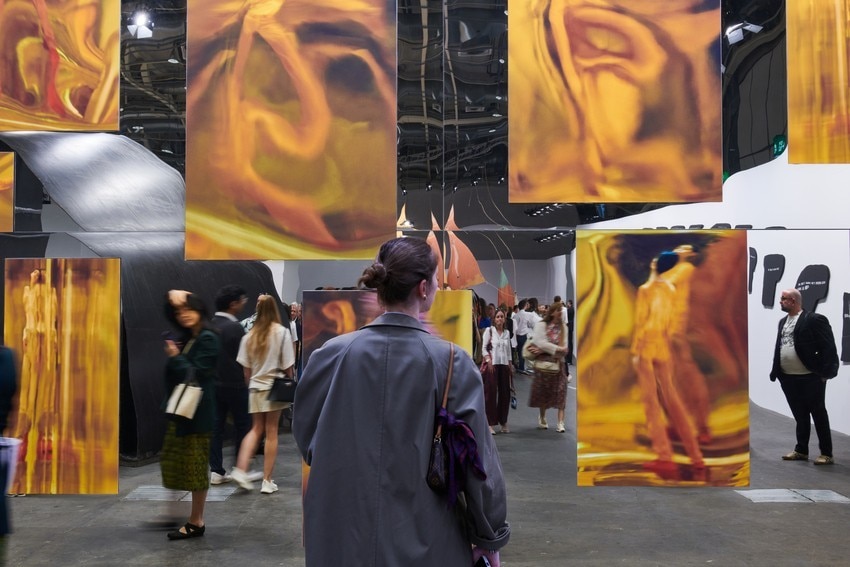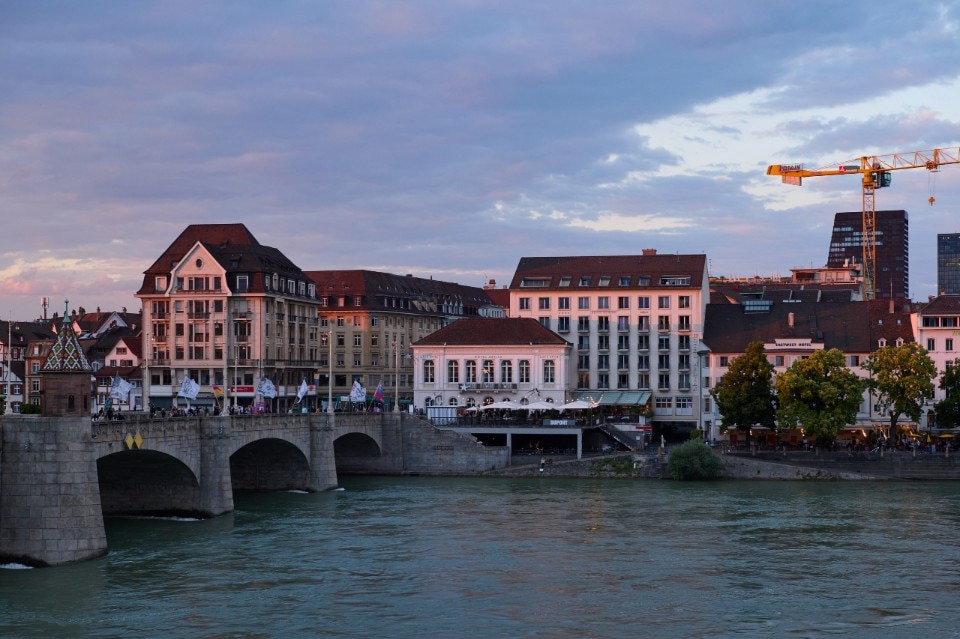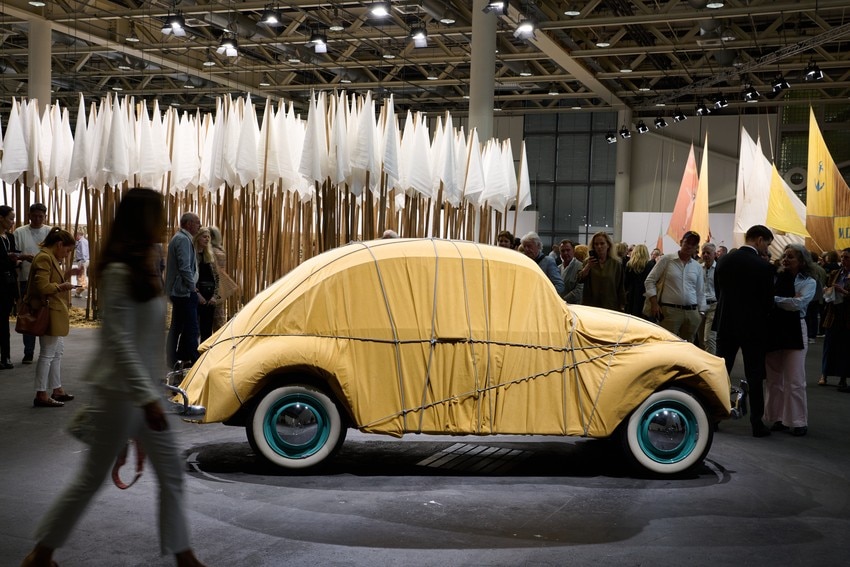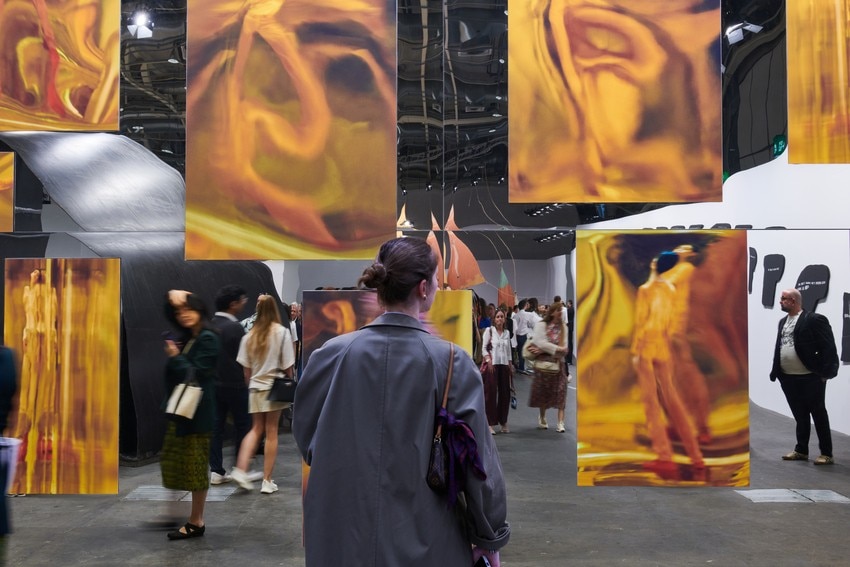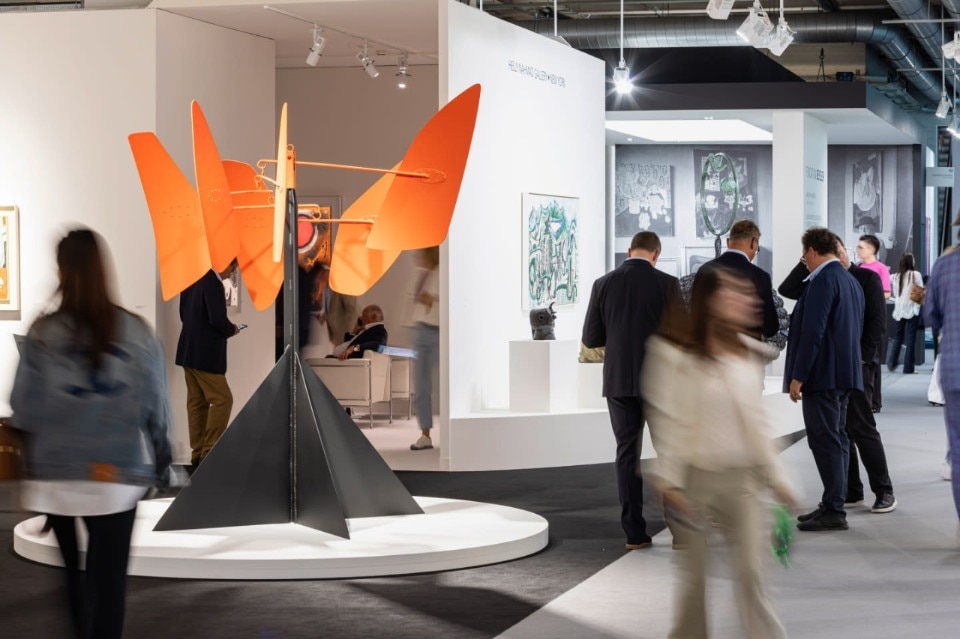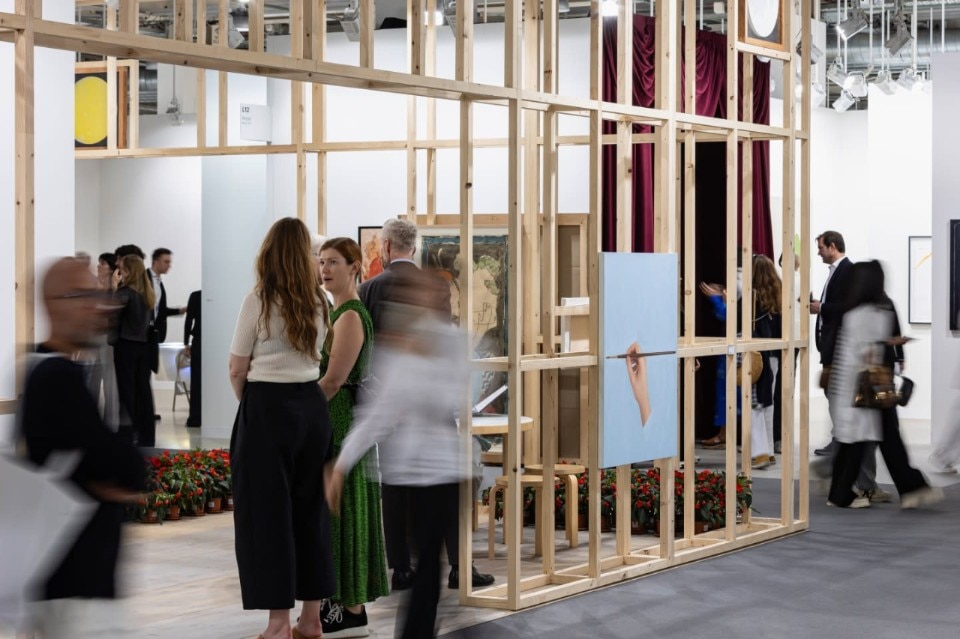Today, Art Basel is everywhere: Miami, Hong Kong, Paris, and soon Qatar. A global event that doesn't merely reflect the contemporary art market—it shapes it. And yet, its very name holds a clue to its origins: Basel. Every June since 1970, the art world has gathered there, where it all began. To understand how a Swiss fair became the dominant model for the art system, we traced its history and looked ahead to the next moves of the giant that, now more than ever, influences careers, prices, and the future of the art world.
An idea born in 1970 (in the right place at the right time)
The first edition of Art Basel took place in June 1970, hosted at Messe Basel, the city’s exhibition center active since the late 19th century and expanded after World War II by architects Hans Hofmann and Hermann Baur. A functional structure, designed to host trade fairs spanning the most diverse industries. It was precisely in the new pavilion that the three founders—Ernst Beyeler, Trudi Bruckner, and Balz Hilt—decided to launch a fair capable of bringing the excellence of the international art market to Switzerland, opening it up to a broader audience than existing German fairs like Art Cologne, which were still seen as too provincial at the time.
The timing was perfect. Europe was still in the midst of the postwar economic boom, and it was in these years that the first major private collections were born—think of Peter Ludwig or the Italian Giuseppe Panza di Biumo. A new geography of art was taking shape: New York had overtaken Paris as the cultural capital, American Pop Art was conquering Europe, and a bridge between the two continents was needed. Switzerland—neutral, centrally located, with a discreet banking system and laws favorable to the art trade—seemed like the ideal place.
Each year, Art Basel showcases not only what matters now, but what will matter next. In a rapidly changing world, this fairl remains central because it anticipates change. It has also become a sociological phenomenon.
The initial formula was eclectic: alongside contemporary art—which was still the domain of a few—there was room for crafts, publishing, design, with particular attention to collectible watches. This approach reduced commercial risk while also revealing an ambition to build a new audience, gathering enthusiasts from various worlds. The quality of the works stood out immediately: early editions featured works by Picasso, Miró, and Giacometti, alongside avant-garde galleries like those of Leo Castelli, Ileana Sonnabend, Marlborough, and Sperone.
But Beyeler’s greatest insight was understanding that a fair couldn't just be a marketplace—it had to become a cultural event, a brand. He introduced rigorous selection criteria, commissioned critical texts, and organized talks and encounters. All with a clear and bold message: at Art Basel, there is room only for the very best—whether it's on a pedestal, hanging on a wall, or behind a booth.
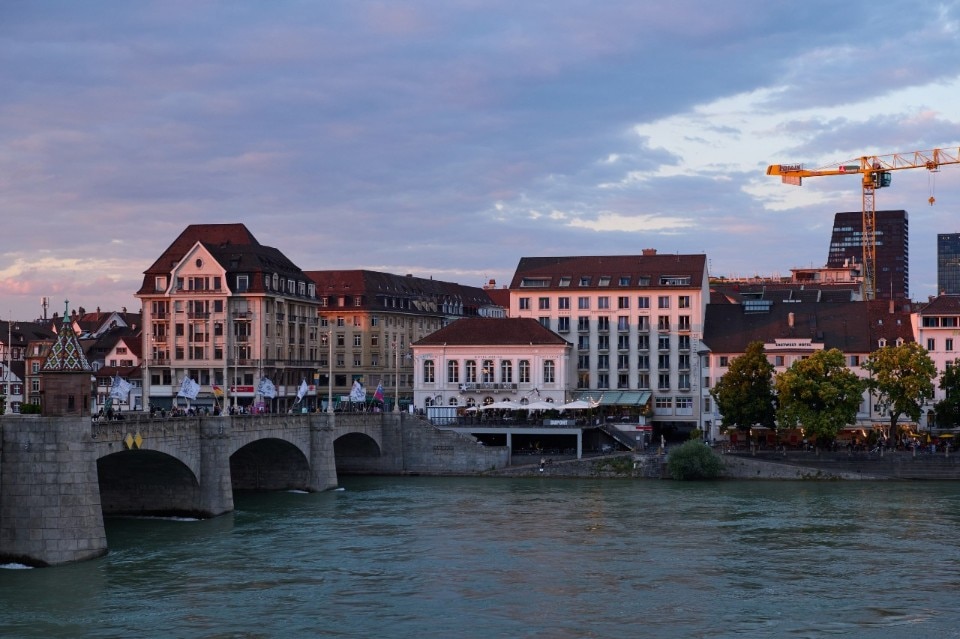
The Golden Age: The 1980s and 1990s
With the explosion of the global art market and the rise of a new generation of collectors, Art Basel solidified its position as an absolute point of reference. It became the stage where the latest successful art movements took shape—from Italy’s Transavanguardia to the Young British Artists. During these years, the fair’s identity emerged clearly: a prime venue for blue-chip galleries and a privileged marketplace for investment-grade art—works by artists already embedded in the system, sold in a context that guaranteed stability, reputation, and international visibility.
Its highly selective criteria—based on consistency and quality—turned the fair into a crossroads between the market and the museum world. Critics, curators, and directors such as Harald Szeemann, Pontus Hultén, and Jean-Christophe Ammann were regular attendees, and many institutional acquisitions began to take place here.
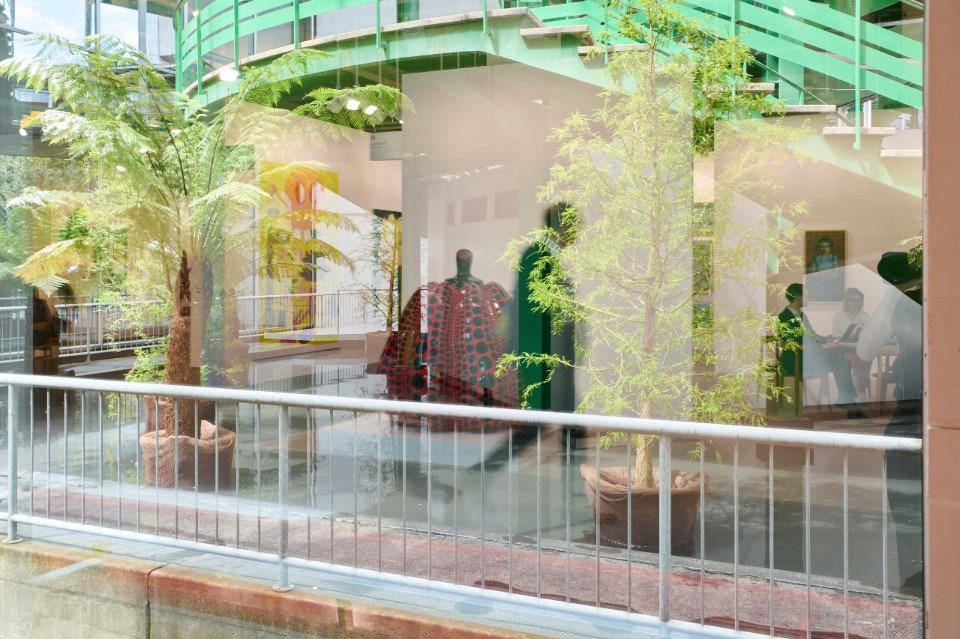
From brand to global constellation
The turning point from industry event to global brand came in the early 2000s, when Art Basel became part of the MCH Group (also owner of Baselworld). By then, art had become an international commodity, and a presence in the new centers of economic power was essential. In 2002, Art Basel Miami Beach was born: hybrid, spectacular, and immediately a meeting point between North and South America. In 2013 came Hong Kong, which absorbed Art HK and established a strong foothold in the Asian context with programming focused on local artists, talks in Mandarin, and institutional collaborations. Then, in 2022, the unexpected twist: Art Basel Paris took over FIAC’s place at the Grand Palais, reshaping the cultural balance of the continent.
Around its main venues, the fair has developed a range of formats and sections that expand the fair experience: Unlimited (since 2000) for large-scale works, Parcours for urban interventions, and initiatives like BMW Art Journey, Conversations, Meridians, Kabinett, and even Art Basel Cities—a city-based experiment now on hold, but indicative of the ambition to transcend the limits of the traditional fair model.
Why is it so important?
Art Basel has established a dominant standard that combines curatorial rigor with commercial logic, global reach with local grounding. For galleries, it’s a springboard for legitimacy; for artists, a potential turning point; for collectors, the most reliable barometer of trends; and for museums, a listening lab. Each year, it showcases not only what matters now, but what will matter next. In a rapidly changing world, Art Basel remains central because it anticipates change.
It has also become a sociological phenomenon: it has turned art into a lifestyle and shaped a cultural jet set that follows a global liturgical calendar—Miami in December, Basel in June, Hong Kong in March, Paris in October.
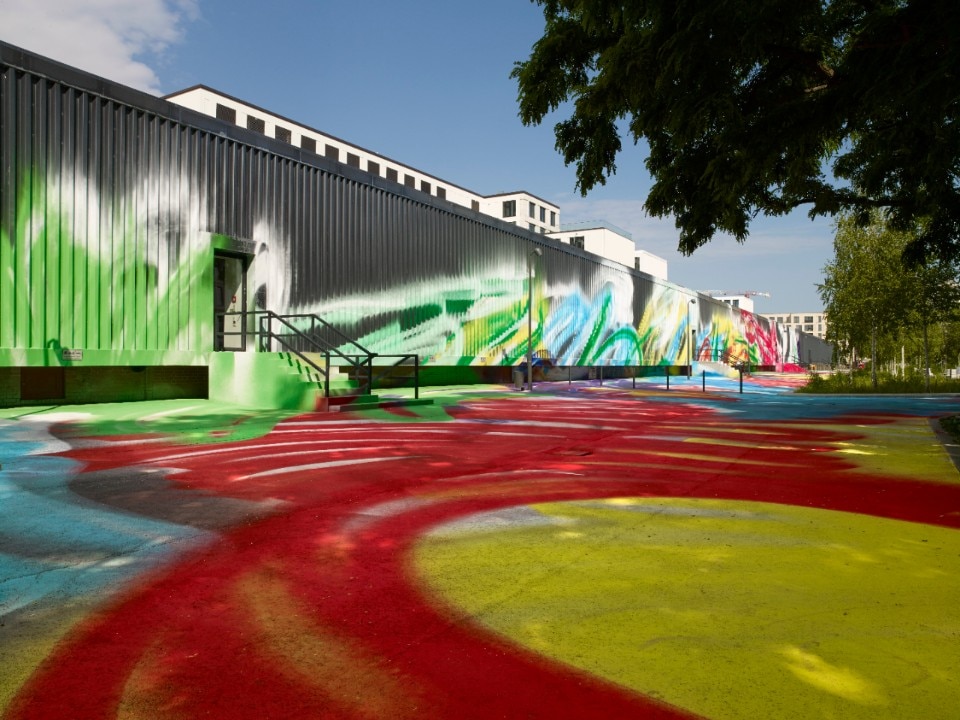
Basel 2025 and straight into the future
The 2025 edition—scheduled for June 19–22, with previews on the 17th and 18th—is the latest proving ground for Vincenzo de Bellis, a key figure in the fair’s recent curatorial evolution and Art Basel’s Director since 2022. With over 280 galleries from 37 countries, the edition reaffirms the fair’s global reach and aims for a more dynamic program of interventions and events. This year, the Unlimited and Parcours sections promise to expand further with public installations spread throughout the city—starting with a major immersive and free installation by Katharina Grosse, which will transform Messeplatz. Parcours, on the other hand, will unfold along Clarastrasse, featuring over 20 site-specific works in everyday spaces such as shops, hotels, and underpasses.
And while preparations for Basel are in full swing, Art Basel is already looking ahead: next stops include Art Basel Paris in October, Art Basel Miami in December, and the debut of Art Basel Qatar in February 2026.
Everything you need to know before visiting Art Basel 2025 at Basel
The 2025 edition of Art Basel in Basel will take place from June 19 to 22, 2025 at the Messe Basel exhibition center, located at Messeplatz 10, 4058 in the Swiss town — one of Europe’s leading exhibition venues, featuring spaces designed by the architecture firm Herzog & de Meuron.
Official ticket prices for the 2025 edition of Art Basel have not yet been announced, but the standard daily ticket usually costs around 60–70 Swiss francs (CHF) (approximately 60–70 euros), with discounts available for students and groups.
The fair is divided into several sections: “Galleries”, featuring modern and contemporary art galleries presenting their roster of artists, is the event’s nerve center. The other sections include: “Feature”, “Statements”, “Edition”, “Unlimited”, “Parcours”, “Film”, and “Conversations”.
With this edition, Art Basel is launching a new section dedicated exclusively to works created within the last five years.


